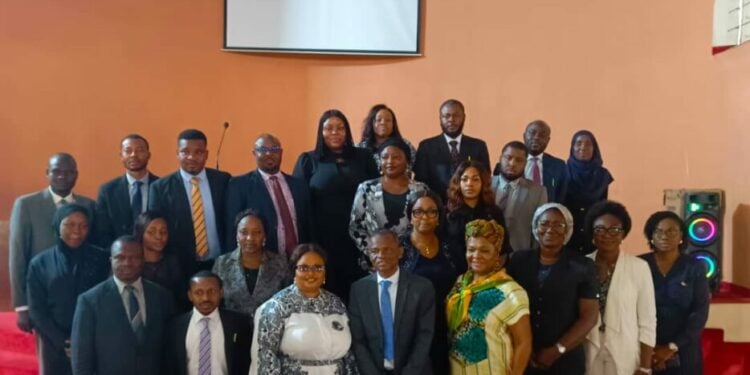A major initiative to integrate restorative justice into Nigeria’s legal system is underway, with magistrates in the Federal Capital Territory (FCT) being trained as key drivers to decongest court dockets and overcrowded correctional centres.
The executive director of Prison Fellowship Nigeria (PFN), Dr. Jacob Tsado, announced this during the opening ceremony of a two-day Restorative Justice Training for Magistrates in the FCT, organised by the Rule of Law and Anti-Corruption (RoLAC) programme in collaboration with PFN.
Tsado stated that the training is crucial because the success of restorative justice hinges on the judiciary’s active involvement.
“Restorative justice cannot take hold without the active involvement of the judiciary.
A lot of the cases that are eligible go to magistrates, so they are a critical cohort in the process of properly establishing restorative justice within the FCT,” he said.
He explained that the goal is for magistrates to buy into the initiative and begin referring cases to the centre for amicable and expeditious resolution, thereby decongesting court dockets and overcrowded correctional centres.
Tsado said the initial training is targeting 30 magistrates, with plans for subsequent sessions to cover all magistrates in the FCT, emphasising that the project is a nationwide rollout.
“Indeed, we have restorative justice projects ongoing in all the geopolitical zones of Nigeria, with Lagos, Plateau, Kano, Adamawa, Abia, Anambra, and Edo as pilot states.
“Apart from Lagos State, which has already established restorative justice centres, steering committees in the other states are working on producing documents and mobilising stakeholders with the ultimate objective of establishing centres,” he said.
Echoing Tsado’s sentiments, the head of the FCT Restorative Justice Centre, Mrs. Mariam Kombo Ezeh, underscored the pivotal role of magistrates in the process.
She explained that the centre operates under the guidance of the FCT Chief Judge and relies on referrals.
“We need the magistrates’ collaboration to send in offenders and victims who have agreed to participate. If an offender has pleaded guilty and shown remorse, they are sent to the restorative justice centre where we sit with the victim, the offender, and the community to determine the appropriate restitution,” Ezeh said.
She clarified that after an agreement is reached, the case is sent back to the court to be entered as a judgment. “This helps in preventing young, first-time offenders from going to prison.”
Ezeh also outlined plans to cascade the training to other stakeholders, including the police, the Department of Public Prosecutions (DPP), and community leaders, to broaden the base of referrals.
Responding to a question on extending the initiative to already convicted individuals, she mentioned the potential of parole systems.
“An inmate who behaves well and shows remorse can have their case reviewed by a magistrate or high court, with the sentence potentially reduced to community service,” she explained.
However, she identified a more immediate target, the large population of awaiting-trial inmates.
“We have more people awaiting trial in correctional centres than those who have been convicted. They are our primary target. If referred for restorative justice, they may avoid a prison sentence altogether,” she said.



